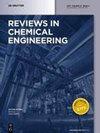An overview on the factors affecting enzymatic saccharification of lignocellulosic biomass into fermentable sugars
IF 6.6
3区 工程技术
Q1 ENGINEERING, CHEMICAL
引用次数: 2
Abstract
Abstract Lignocellulosic biomass (LCB) is a widely available and sustainable energy resource that can be directly or indirectly converted to biofuels and value-added bioproducts. In such LCB conversion, enzymatic saccharification is commonly regarded as a green alternative to chemical hydrolysis due to less energy-intensive, less toxic, and more environment-benign for efficient fermentable sugar recovery. However, enzymatic saccharification faces substantial challenges, since the complex polymeric matrices of LCB necessitates a variety of enzymes for complete and adequate saccharification. Empirical evidence on enzymatic saccharification has paved the way for optimizing the processes and design for enhancing the performance in LCB. This review examines the enzymatic saccharification of LCB, focusing on the important parameters affecting the process, such as pH, temperature, agitation, enzyme/substrate loading, residence time, and the enzymes required to degrade various LCB components. Various strategies have been reported to improve the performance in saccharification and to address the non-productive adsorption of enzymes. A preliminary economic competency valuation of enzyme-derived fermentable sugars is proposed. Wheat straw, sugarcane bagasse and corn stalk appear, in this case, to be the most economic competent LCBs for commercial enzyme-derived fermentable sugar production. Lastly, practical challenges and future research directions on the enzymatic saccharification of LCB are discussed.影响木质纤维素生物质酶糖化成可发酵糖的因素综述
摘要木质纤维素生物质(LCB)是一种广泛可用的可持续能源,可以直接或间接转化为生物燃料和增值生物产品。在这种LCB转化中,酶促糖化通常被认为是化学水解的绿色替代品,因为它能耗更低、毒性更小,并且对有效的可发酵糖回收环境更有利。然而,酶促糖化面临着巨大的挑战,因为LCB的复杂聚合物基质需要多种酶来进行完全和充分的糖化。酶糖化的经验证据为优化工艺和设计以提高LCB的性能铺平了道路。本文综述了LCB的酶促糖化,重点研究了影响该过程的重要参数,如pH、温度、搅拌、酶/底物负载量、停留时间以及降解各种LCB成分所需的酶。已经报道了各种策略来提高糖化性能并解决酶的非生产性吸附。提出了酶衍生可发酵糖的初步经济能力评估。在这种情况下,小麦秸秆、甘蔗渣和玉米秸秆似乎是商业酶衍生可发酵糖生产中最经济有效的LCB。最后,讨论了LCB酶糖化的实际挑战和未来的研究方向。
本文章由计算机程序翻译,如有差异,请以英文原文为准。
求助全文
约1分钟内获得全文
求助全文
来源期刊

Reviews in Chemical Engineering
工程技术-工程:化工
CiteScore
12.30
自引率
0.00%
发文量
37
审稿时长
6 months
期刊介绍:
Reviews in Chemical Engineering publishes authoritative review articles on all aspects of the broad field of chemical engineering and applied chemistry. Its aim is to develop new insights and understanding and to promote interest and research activity in chemical engineering, as well as the application of new developments in these areas. The bimonthly journal publishes peer-reviewed articles by leading chemical engineers, applied scientists and mathematicians. The broad interest today in solutions through chemistry to some of the world’s most challenging problems ensures that Reviews in Chemical Engineering will play a significant role in the growth of the field as a whole.
 求助内容:
求助内容: 应助结果提醒方式:
应助结果提醒方式:


